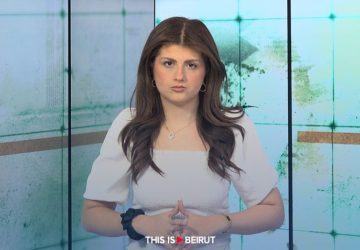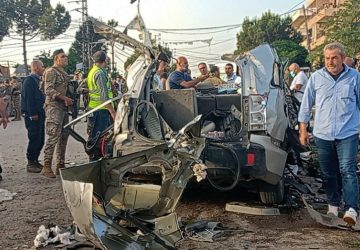Listen to the article
Ramadan truce and acceleration of the peace process in the region, or deterioration of the situation in South Lebanon and escalation of conflict as far as an Israeli incursion? All scenarios are on the table, making the mission of American envoy Amos Hochstein in Beirut complicated. What’s in store for us?
Hochstein is expected to land in Lebanon on Monday to defuse the conflict in South Lebanon. His visit is likely to kick off a diplomatic initiative, alongside French envoy Jean-Yves Le Drian and Qatari envoy Abou Fahd Jassem al-Thani.
What Exactly Will Hochstein’s Mission Involve?
Jean Sebastien Guillaume, founder of Celtic Intelligence, suggests that the American envoy is poised to “unveil a strategy aimed at resolving the 13 contentious points along the Blue Line, delineating the border between Lebanon and Israel, while also ensuring the implementation of United Nations Security Council Resolution 1701.” According to Guillaume, “this course of action would progress through multiple stages, starting with Hezbollah’s withdrawal 10 km away from the border.”
It is worth recalling, in this regard, the agreement proposed by Amos Hochstein last January. In an attempt to manage the conflict, he dealt with several specific points of contention. This includes, according to Guillaume, “point B1 at Ras Naqoura, which could potentially be placed under Lebanese control, thus unlocking part of the 13 disputed points.” In the American envoy’s proposed plans, as outlined by Guillaume, “the issue of Israeli withdrawal from the Lebanese portion of the village of Ghajar would be discussed, as it might be perceived as a significant step toward respecting Lebanese sovereignty.” Regarding the imbroglio surrounding the Shebaa Farms, the founder of Celtic Intelligence suggests that “the area could be placed under United Nations authority until a more permanent solution is reached.”
Geopolitical Context of Hochstein’s Visit
Hoschtein’s arrival coincides with a complex geopolitical context involving Lebanon, Syria, Israel and the UK, since discussions will also cover the proposed extension of the British project to erect surveillance towers along the southern border of Lebanon. The project envisages the construction of posts, five kilometers deep within both Lebanese and Israeli territories, although Israel’s acceptance is uncertain. Currently, this initiative is under discussion between UK officials and Hochstein.
The UK built border control towers over a decade ago, spanning the area from the Arida coastline in northern Lebanon to the slopes of Mount Hermon in the South. As current negotiations include discussions about setting up similar towers along the Lebanese-Israeli border, Syria opportunely protested, after more than ten years of silence, using the pretext that they posed a threat to the security of Damascus.
Given the urgency within the US, where the Biden administration wants to avoid approaching the November presidential elections in a context of war, and where the problem of timing for each of the stakeholders comes into play, it’s hard to imagine Iran and its local and regional allies facilitating Amos Hochstein’s mission without some kind of trade-off.





